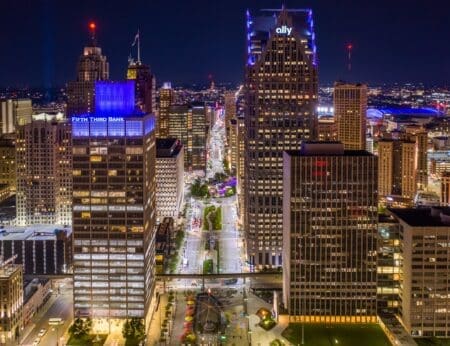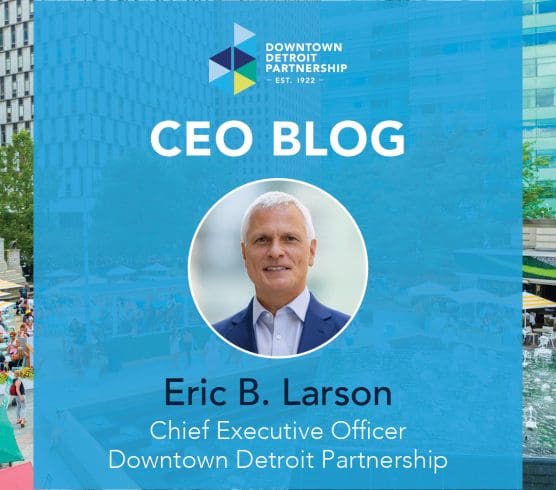The Downtown Detroit Partnership’s underlying mission is to create a Downtown that is clean, safe, and welcoming to all. If that sounds simple, it’s not. We accomplish this through myriad activities that include strategic investments in the Downtown, economic development activities, public policy advocacy, placemaking and park activations, and engaging in forward and critical thinking, among other initiatives, that put Detroit ahead in urban innovation.
One area we are exploring is Universal Design, a global movement of inclusive design practice initiated at NC State University’s College of Design.
According to the Center for Universal Design, UD is “the design of products and environments to be usable by all people, to the greatest extent possible, without the need for adaptation or specialized design.”
At the DDP, we are committed to creating environments that are accessible, usable, and inclusive. The caveat to that above definition, with a city like Detroit, is that we have roads, sidewalks, public spaces, and an aging infrastructure that, more often than not, were not designed with all people in mind. It’s up to us to change that. So, for us, adaptation is imperative. As a wise person once said: “If you don’t like change, you will like irrelevance even less.”
Thousands of people use our beautiful, award-winning parks and public spaces, and well-maintained sidewalks every year – people of all ages, races, religions, abilities and disabilities. But do they meet the needs of the diverse populations we serve? Not without careful planning and design, and not without constant adjustment and improvement through continuous learning.
The DDP recently engaged Steve Wright, a UD expert planner and consultant, to examine Downtown Detroit from a Universal Design perspective, and the results were both at times rewarding and eye-opening. Our team strives to take a holistic view of inclusion, and I was pleased to have this view validated by the report on our public spaces. But even after years of progress, there is still much more to do.
Some examples from the report:
- Like many cities, electric scooters are available throughout downtown. We need to make these a valuable addition to our transportation infrastructure and ensure they’re used responsibly by all riders. Too often, they’re left blocking sidewalks making them impassible.
- Capital Park is a “great urban asset,” but the wheelchair-stopping stones need to be replaced with a flat, smooth material to make the park accessible for all.
- Woodward Esplanade beautifully connects Campus Martius Park to the Spirit of Detroit Plaza and the Riverfront. It has received high marks for its continuous paved surface, which is wide enough for most wheelchairs. However, some gliders have larger bases that can block access.
- There are planters in city plazas that crowd the sidewalk. We can move them back to create a wider path.
- Our parks should all have paved access to art, decorative fountains, and shaded areas.
The CDC reports that one in four individuals has some disability that impacts their daily lives. It is imperative that we make sure our city is truly welcoming – and accessible – for all. Our planning and placemaking team will take all of the report’s recommendations into consideration and share them with our neighborhood partners, city planners, developers and other stakeholders. The DDP wants everyone to feel like Downtown Detroit values them and is a great place to visit, live, work, and play. Universal Design is one way we can accomplish this.

